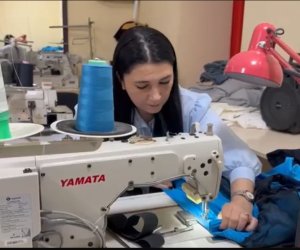Azerbaijan increases food imports to a record level
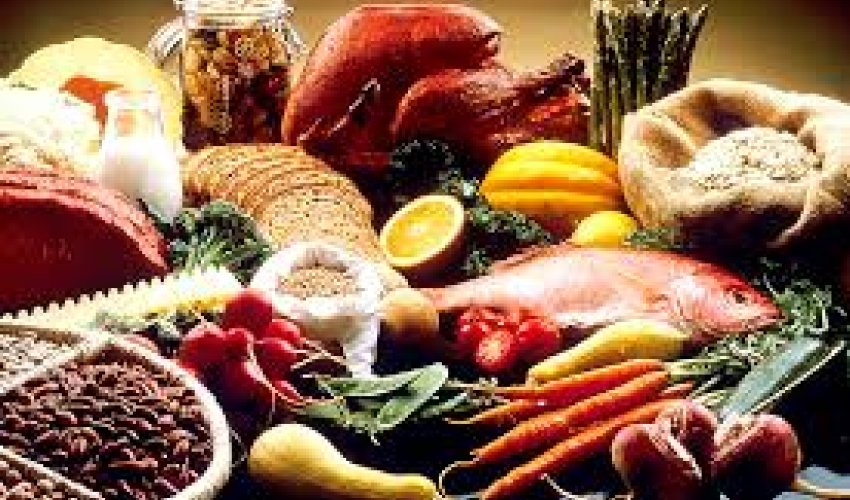
According to information released by the State Customs Committee, Azerbaijan imported food products worth $2 billion 474 million 815 thousand in 2024. Compared to the previous year, the value of food imports increased by 14.5%. This marks the first time in Azerbaijan's history that the country has imported a record amount of food products. In terms of value, food imports have increased by 50.5% in the last 5 years and by 2.3 times in the last 10 years. It is also worth mentioning that food imports have increased in terms of physical weight.
Based on the data presented by the State Customs Committee, our calculations show that in 2024, rice imports increased by 17.7% in physical weight and by 32% in value compared to the previous year. Our research revealed that in the last 5 years, rice imports have grown by 32.1% in physical weight and by 70.6% in value. Over the past 10 years, rice imports have increased 10.5 times in physical weight and 24.8 times in value.
The sharp increase in rice imports appears to have raised concerns for the Azerbaijani government. In February 2018, the government adopted the "State Program on the Development of Rice Cultivation in the Republic of Azerbaijan for 2018-2025". The presidential decree states that the purpose of this program is to develop rice production, meet the population's demand for rice, improve the supply of raw materials to processing plants, and enhance the employment and welfare of rural populations. The introduction of the program also noted that "in recent years, significant measures have been taken to develop rice cultivation, meet the population's demand for rice, and increase rice production, achieving positive results."
Those who prepared the program mentioned positive results in meeting the demand for rice and increasing rice production while attempting to cover up the existing problems in the sector. In reality, however, the government has not been able to make significant progress in increasing rice production for many years. As a result, rice production in the country decreased from 22,200 tons in 2000 to 13,900 tons in 2023, while imports increased from 17,800 tons in 2000 to 64,300 tons in 2024, a 3.6-fold rise.
The creators of the State Program believed that its implementation would develop Azerbaijan's rice cultivation traditions, significantly increase the country's self-sufficiency in rice, reduce dependency on imports, and strengthen the country's agricultural potential.
State Program Did Not Increase Interest in the Sector, but Decreased It
The State Program envisaged identifying optimal areas for rice cultivation in the regions in order to achieve the program's objectives. The target was to increase the area for rice cultivation to 10,000 hectares nationwide. However, research shows that after the program was adopted, the areas for rice cultivation not only did not increase, but actually decreased sharply. For example, in 2017, the area for rice cultivation in the country was 5,100 hectares, but from 2018 onwards, the cultivated area steadily decreased, reaching 3,200 hectares by 2024. The government's State Program did not increase interest in rice cultivation; rather, farmers who previously cultivated rice reduced their cultivated areas, and some even completely abandoned rice farming. This indicates that the State Program did not increase interest in the sector but, rather, decreased it.
State Program Did Not Increase Rice Production, but Decreased It
In 2017, before the adoption of the State Program, Azerbaijan produced 15,900 tons of rice. However, in 2018, following the adoption of the State Program, rice production decreased by 24.7%, falling to 11,900 tons. Similarly, in 2017, 16,200 tons of rice paddy were produced, but in 2018, following the adoption of the State Program, paddy production dropped by 23.4%, reaching 12,400 tons. In 2019, paddy production was 12,000 tons, and by 2020 it dropped to 9,900 tons. Finally, in 2023, the country's rice production was 13,900 tons, 14.2% less than the 2017 level. Six years after the adoption of the program, it has not been possible to bring rice production back to the 2017 level.
Self-Sufficiency in Rice Did Not Increase, It Decreased
The State Program states that its implementation will significantly increase Azerbaijan's self-sufficiency in rice. Although the volume of rice used as a food product in Azerbaijan has more than doubled over the past 10 years, the increase has been primarily due to imported rice. Azerbaijan's level of self-sufficiency in rice is very low. According to the State Statistics Committee's report, Azerbaijan's self-sufficiency in rice was 23.8% in 2017, before the adoption of the State Program, but after the program's adoption, it decreased to 20.4% in 2023. In reality, this indicator provided by the State Statistics Committee reflects the share of domestic production in the total rice consumption across the country.
The international standard for per capita rice consumption is 32.8 kilograms per year. Azerbaijan's annual production of 13,900 tons of rice (equivalent to 1.2 kilograms per capita) covers about 3.6% of the country's total demand. This means that Azerbaijan's self-sufficiency level in rice, according to the standard, is 3.6%. It is also important to note that in the 2019-2020 season, the global per capita rice consumption was 53.9 kilograms.
The State Program Did Not Reduce Dependency on Imports, It Increased It
The State Program mentions that its implementation will reduce Azerbaijan's dependency on imports. In 2017, before the program was adopted, Azerbaijan imported 51,000 tons of rice worth $35.9 million. Six years after the program was adopted, in 2024, Azerbaijan imported 64,300 tons of rice worth $66.1 million, which is 26% more in physical weight and 84.1% more in value compared to 2017. This indicates that the government's State Program did not reduce, but rather increased, the country's dependency on rice imports.
The Goals Set in the Program Are Not High, On the Contrary...
The goals set in the State Program are not high. Consider this: in 1937, Azerbaijan produced 50.3 thousand tons of rice using primitive methods (3.6 times more than today). In 2000, the country achieved a yield of 50.2 quintals per hectare (15.3 quintals more than today). However, the current government has set a target to increase productivity to 40 quintals per hectare and production to 40,000 tons by 2025 through modern technology.
Seven years have passed since the adoption of the State Program. During this period, the government has failed to achieve its objectives. Therefore, it seems unlikely that rice production will reach 40,000 tons by 2025.
Overall, the State Program for the development of rice cultivation for 2018-2025 was poorly prepared and superficial.
It is worth noting that in 2000, the average yield per hectare in Azerbaijan was 50.2 quintals, while in the Astara region it was 74.5 quintals. By 2005, in the Lankaran-Astara economic region, yield reached 73.2 quintals per hectare, and in the Lankaran region, it reached 85 quintals. Modern technology allows for the production of 80-100 quintals of rice per hectare. Azerbaijan has the fertile land, climate conditions, and resources to at least double productivity.
Global Demand for Rice is Increasing
The Food and Agriculture Organization (FAO) has forecast a 0.8% increase in global rice production in the 2024-2025 season, potentially reaching a record high of 538.8 million tons. The organization also increased its global rice consumption forecast by 1.5% for the 2024-2025 season, reflecting expectations of significant consumption growth in Asian countries. As a result, the global rice consumption forecast is set at 536.7 million tons, which is 2% higher than in the 2023-2024 season. It is also worth noting that the FAO's recent report shows a 4.7% drop in rice prices globally in January. Additionally, rice demand is steadily increasing in Azerbaijan.
Improvement of Water Supply for Rice Cultivation in Non-Rice Growing Regions Was Planned
Rice cultivation cannot develop without stable water supply. The State Program's action plan includes improving the water supply and the reclamation status of rice fields, repairing and reconstructing irrigation infrastructure, and continuing the construction of reservoirs such as the Ayrichay and Alicanchay reservoirs. The Ayrichay reservoir is located in the Sheki and Gakh regions, while the Alicanchay reservoir is in the Sheki and Oguz regions. However, in Oguz, rice cultivation has not been practiced since 2000, and in Sheki, only 4 hectares were cultivated in 2018, the year the State Program was adopted. In the Sheki-Zagatala economic region, no rice cultivation has occurred since 2018. It is paradoxical that the action plan includes only one measure related to water supply for rice cultivation, and it concerns a region unrelated to rice farming. I believe that the State Program, including its action plan, was drafted by non-professionals.
Will the Goals Set in the State Program Be Achieved?
The Azerbaijani government set a goal in the program to reach 10,000 hectares of rice fields, increase yield to 40 quintals per hectare, and reach 40,000 tons of total production by 2025.
Seven years have passed since the adoption of the program, and during this period:
Although the program set a goal to reach 10,000 hectares of rice fields, the area has not increased; on the contrary, it has decreased by 37.2%.
Although the program mentioned that self-sufficiency in rice would significantly increase, after its adoption, self-sufficiency decreased by 14.2%.
Although the program stated that dependency on imports would decrease, after its adoption, rice imports increased by 26% in physical weight and 84.1% in value.
Although the program mentioned an increase in rice production, rice production decreased by 12.2% compared to the previous year's figure.
Son xəbərlər 
Daha çox 



























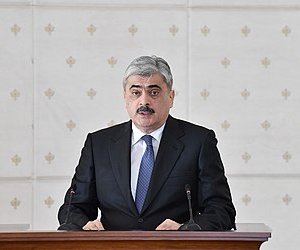







 Foto
Foto 
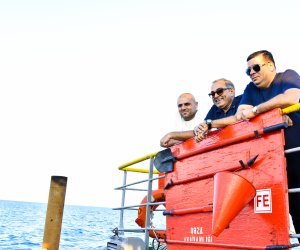

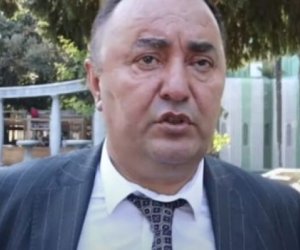
 Video
Video 

